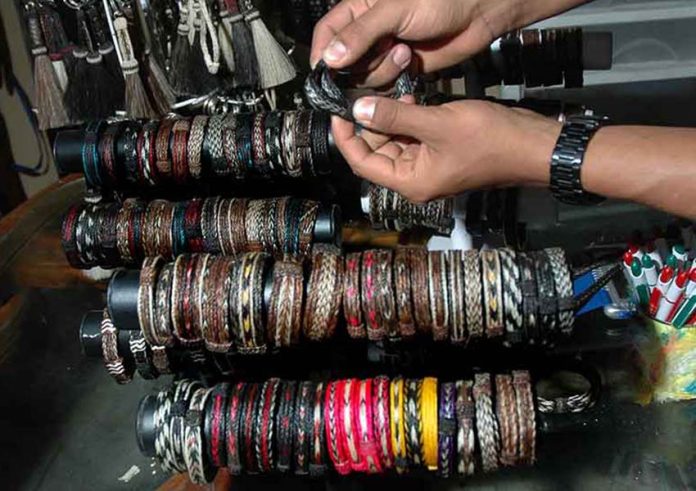Little Lake Cajititlán lies 25 kilometers south of Guadalajara. Sprinkled along its shore are small communities of very talented artisans. After visiting several of them, I came to the largest town around the lake, also named Cajititlán.
I knew of no dominant craft there and suspected that its “specialty” must be its big tianguis (market), where the crafts of all the other communities were sold every week.
“Doesn’t Cajititlán produce a handicraft all its own?” I asked a local man.
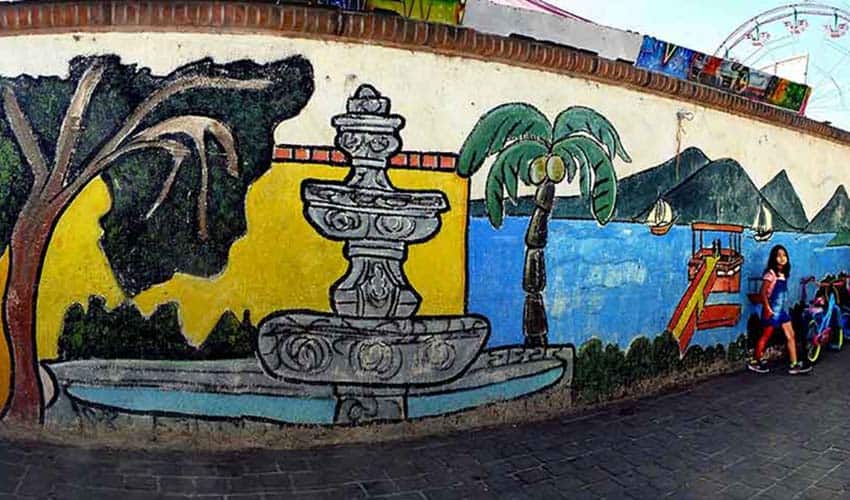
“No, no,” he said… “except for Consuelo. She makes nice things out of crin and cerda.”
Crin, I learned, refers to a horse’s mane, while cerda is the beautiful long hair of its tail. Naturally, I was curious to see what an artistic person could make out of these.
It was 2012, and my wife and I found Consuelo Cervantes working on her craft at home. Upon discovering how curious we were about what she was doing, she began to show us all kinds of beautiful and ingenious handcrafts she’d made: from the mane, she made key fobs and tassels, and from the tail, elegant belts that any charro would be proud to show off.
“We normally go to rodeos and similar events, where we sell our products to people who love horses,” Consuelo explained. “So our customers don’t come to us — we go to them.”
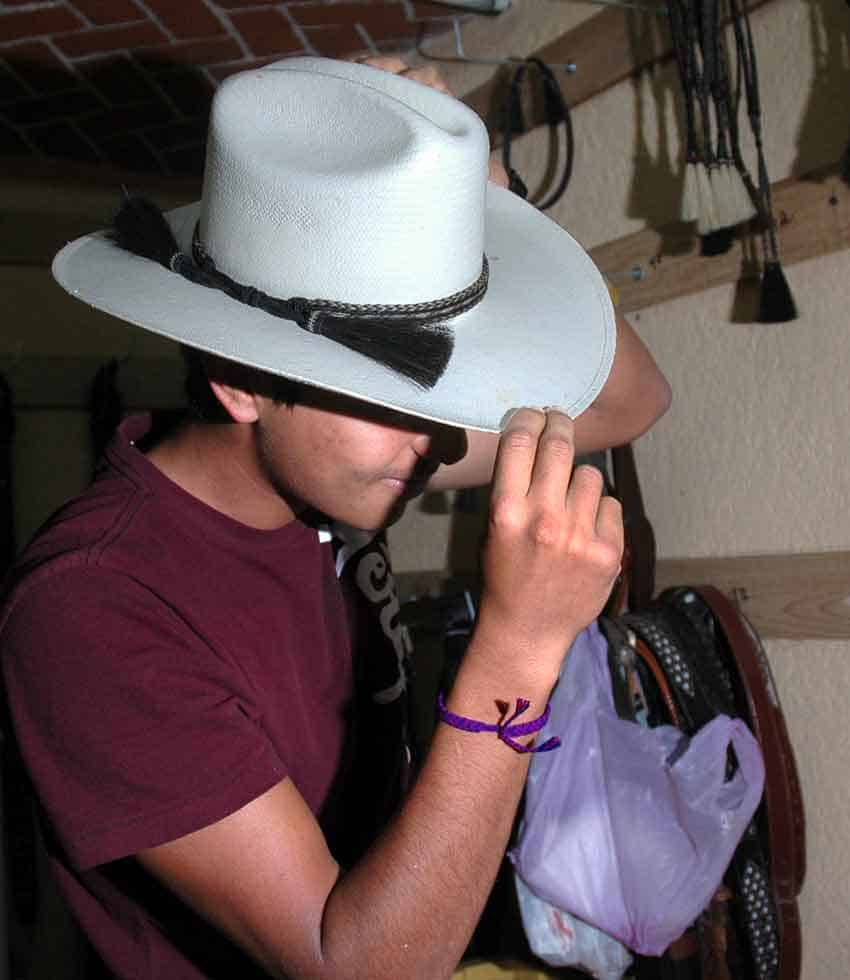
It was hard to believe the beautiful belts they were selling were actually made of horsehair until Consuelo took us to a back room and showed us how easily she could weave a few long strands of a horse’s mane into tresses, which were then interwoven with others, eventually resulting in a belt or bracelet displaying beautiful patterns.
“But how did you learn to do all this?” I asked.
“You won’t believe it, but it was actually thanks to a gringo from Ajijic who came here in 1979. His name was Jim Marthai, and he had been taught to weave horsehair by indigenous people in the United States. So it was from him I learned these skills, and I, in turn, have taught others.”
Jim Marthai, I later learned, passed on years ago, but his legacy has flourished in Cajititlán.
Now, in 2023, Consuelo’s family no longer works out of a back room in their home. They receive the public at Taller Rodríguez, one of two workshop showrooms in Cajititlán regularly displaying and selling horsehair crafts.
I asked Consuelo’s son Cristián where they get their raw material.
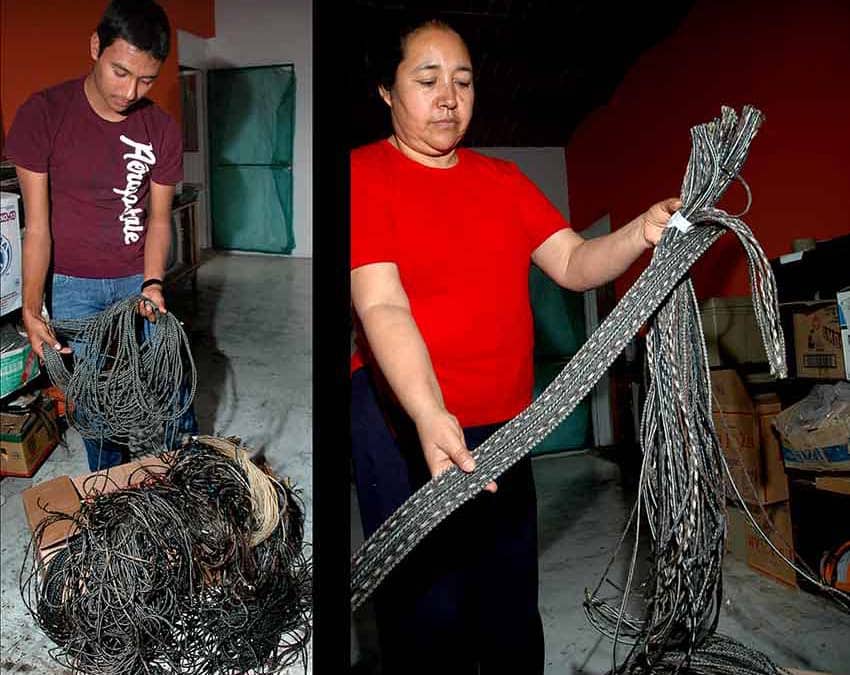
“From ranchos,” he said, “many, many ranchos. You see, they regularly cut a horse’s mane and tail — maybe every three months — so they won’t grow too long and get caught in thorns and cacti and maleza (brush).
“They used to throw this hair away, but now they save it for us. So we buy it by the kilo, and when we get it, we wash it, we disinfect it, maybe we dye it and then, finally, we start to weave it. Washing a kilo of crin or cerda takes about two hours. Then we put it out in the sun to dry, which may take three to four hours.”
Cristián said that the family started out making simple things like bracelets and hat bands for sombreros, “but then, as time went by, we began to invent, to innovate.”
“Now, for example, we’re making beautiful, unique handbags, which we’re exporting to the U.S., Italy and Spain. We used to mainly sell our products at charreadas (rodeos), but now we are going to venues like the Feria de Libros (Book Fair), where people are fascinated because they’ve never seen something made out of horsehair.”
Cristián proudly added that his family had developed techniques for creating riding saddles out of strong, beautiful horsehair fabric.
“In fact,” he said, “there are only four horsehair saddles in the whole world, and we’re the ones who made them!”
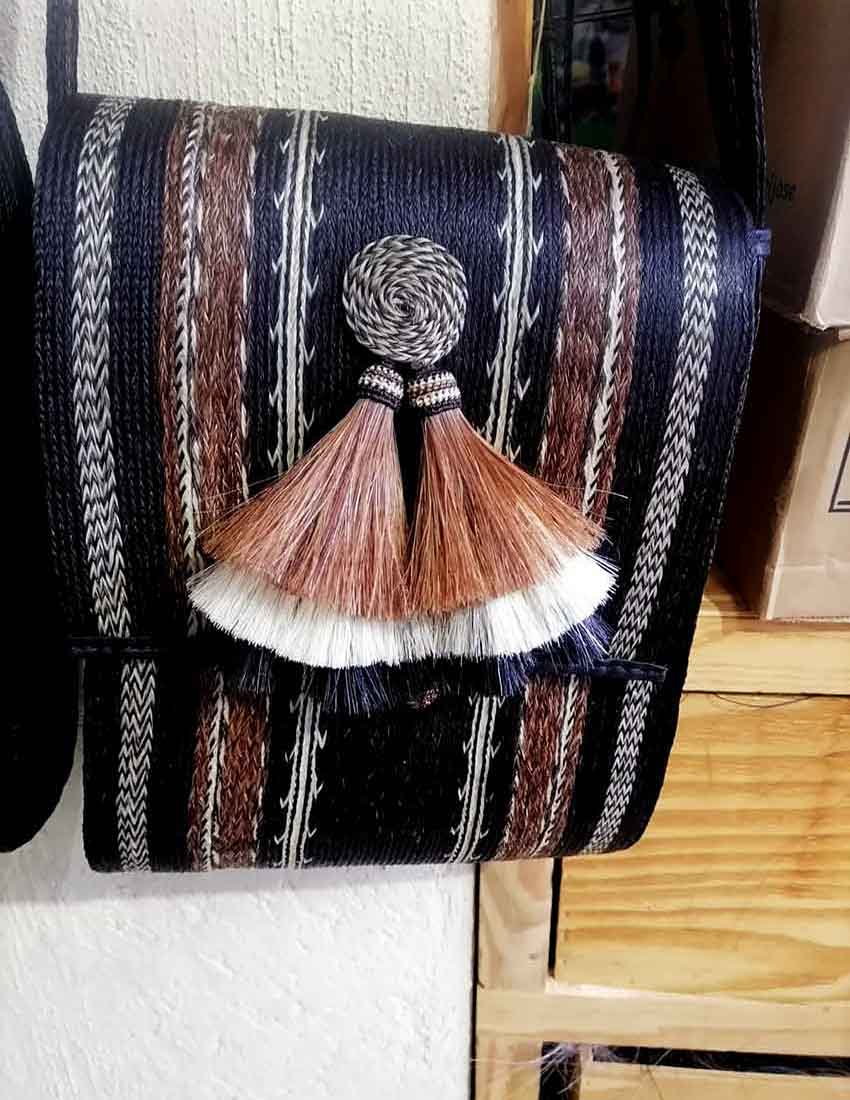
In 2017, a saddle made by Taller Rodríguez won first prize for arts and crafts in Jalisco. In subsequent years, their saddles won more prizes, until, in 2021 in Mexico City, the family accepted the highest trophy of all for Mexican artisans: the Galardón Presidencial, the Presidential Award.
“Just the weaving of that saddle,” commented Cristián, “took four of us three full months to do. It contains between 400 and 500 meters of woven horsehair. and then on top of that, there are the straps and flaps and everything else that goes into a saddle!”
Another of Taller Rodríguez’s innovative projects was its decoration of the giant letters in town spelling its name — CAJITITLÁN. These giant letter landmarks spelling a city/town’s name is a common sight in Mexico, and a favorite landmark for visitors, who like to take photos of themselves in front of it.
“We covered each letter with woven horsehair,” Cristián’s brother Sergio told me. “It was for another competition that was only at the municipal level. They asked each town around the lake to create something typical of the local craft. …And my brother said, ‘Why don’t we cover each of those huge letters with cerda?’”
Every letter ended up being covered with around 72,000 hairs! Taller Rodríguez won the competition, but their glory was short-lived:
“Maybe you could say we were too successful,” Sergio said. Those letters were so beautiful that people stole most of them! In the end, the municipality had to replace them all with the usual painted letters — so all our work was in vain. That’s Mexico for you!”

Check out the Rodríguez family’s Facebook page for their latest creations, especially the purses, which Austrian painter and former fashion designer Ilse Hable Taylor called “stylish and lovingly detailed: truly works of art.”
The writer has lived near Guadalajara, Jalisco, since 1985. His most recent book is Outdoors in Western Mexico, Volume Three. More of his writing can be found on his blog.
